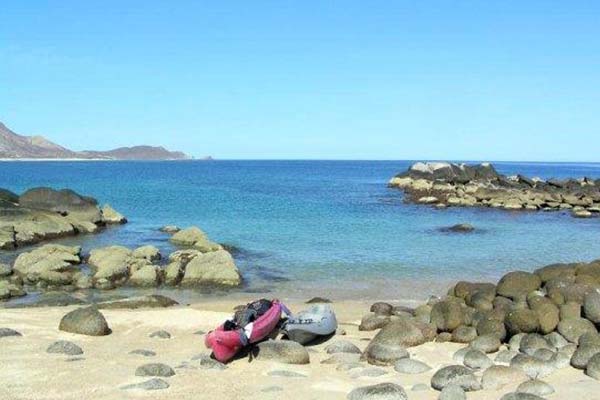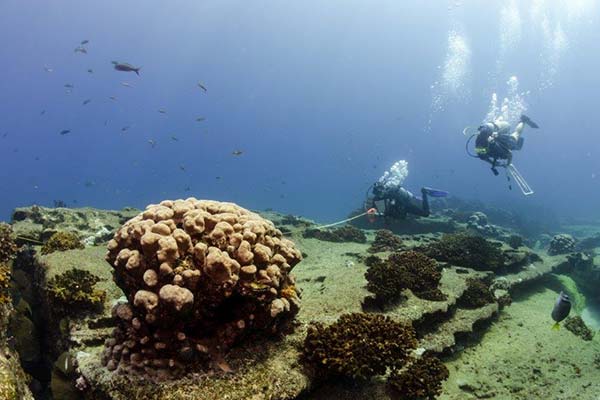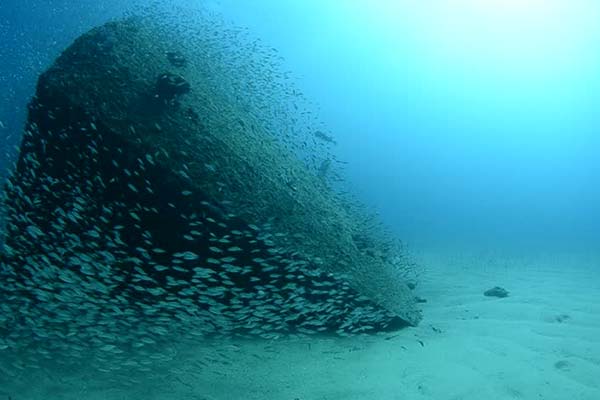Cabo Pulmo Dive Sites
The Cabo Pulmo Reef is the northernmost LIVING coral reef in the Eastern Pacific ocean and the ONLY living coral reef in the entire Sea of Cortez. It has become a popular attraction for divers visiting this remote area as well as divers shuttling in by various methods from both Cabo San Lucas and La Paz.
The reef itself owes its existence to the natural geography of the surrounding bay which shelters the reef and keeps the waters constant at approximately 70 degrees, an essential environment for coral growth. The bay is an ideal place for snorkelers and beginning divers with much of the reef accessible from shore. However, there are also spectacular sites awaiting the more advanced and experienced divers with most dives between 30-70 feet.
NOTE: Cabo Pulmo Bay, including Frailes Bay is part of an official Mexican Marine Park and sanctuary. The taking of shellfish, marine life and fish is strictly prohibited. Additionally, the coral environment is extremely fragile and delicate. Extreme care should be exercised when anchoring boats.


Mermaids Beach
Sometimes called “Dinosaur Egg” beach because of the unusually uniform oval boulders which surround the cove. Excellent for beginning divers and snorkelers with an abundance of underwater structure and coral. Accessible by boat or a short hike along the southern shore of Pulmo Bay, it’s a popular place to picnic, but secluded enough to keep out the big crowds that sometimes settle on other beaches along Pulmo Bay. Numerous fish are inside the cove forming Mermaids Beach, but just outside and around the point the waters drop to approximately 30-40 feet along an irregular rock wall with overhangs and small caves. Surge can be a problem outside the cove so only divers should venture outside the cove.

Islote



Frailes Rock Sea Lion Colony

El Bajo
One of the long fingers or rock and coral which proliferate the sea floor of Pulmo Bay, El Bajo runs generally north/south in approximately 55 feet of water. When the current is right, this is truly an excellent drift dive when divers can literally fly along the ridges and stop to examine the varied sea life which inhabits the numerous natural ampitheaters created by the reef. Grouper, Cabrilla, Seargeant Majors, Anglefish, Pufferfish and Grunts congregate in large numbers along the reef as well as Lobster, Eels and Rays.



Los Frailes Bay

Eileen's Reef



Roca de Jonathan
(The middle Broccoli Forest Reef) separated form the inner reef by large fingers of sand. The rocks and coral heads are larger. Noted for several natural ampitheaters where grouper, bass and other species gather for excellent viewing. Whale sharks have been seen here during plankton blooms. The area is also populated by large groups of conch and scallops.

Piedras Wohlford Reef



Cabo Pulmo Wrecks
There are two wrecks to explore in Cabo Pulmo. One is the wreck of the freighter, Colima which ran aground and sank in 30-40 feet of water during a fierce 1939 storm strewing all manner of debris on the ocean floor. The other wreck is a large tuna boat which wnet down in 1978. The 90 foot wreck is in about 50 feet of water. Although the hull is long gone, much of the superstructure, cargo holds, rigging and netting have been left on the sand floor. During the latter parts of the year, the wreck can be host to literally thousands of fish of numerous species making for excellent photography.

Do you want to
start diving now?
We want to treat you the same way we like to be treated when we go on a diving vacation: as family, in a warm and welcoming environment. Our award-winning private diving resort is run in accordance with our personal principles as well as international safety and training standards.

